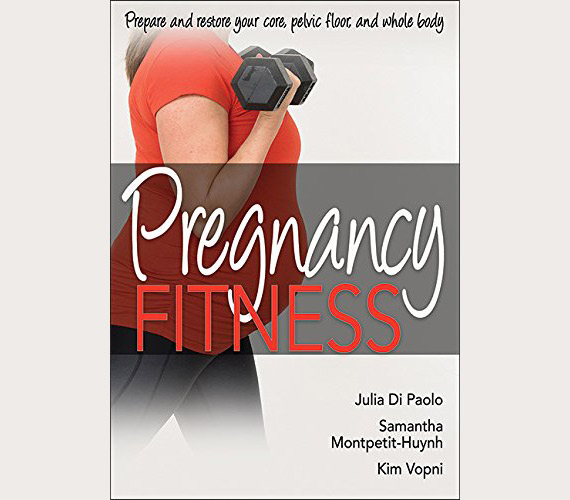
Pregnancy Fitness
Pregnancy Fitness is a book written for the pregnant woman to help her through her pregnancy journey and provide ideas and routines for exercise that are safe and effective. The book is split into three sections: Understanding Your Body Through Pregnancy, Exercises to Prepare and Recover From Birth and Sample Programs for Each Phase Of Pregnancy.
In the first section: Understanding Your Body Through Pregnancy, there is a detailed anatomical and physiological description of what is happening to the pregnant body through the trimesters. I particularly liked the description of the fourth trimester which explains the importance of self-care and exercise management post birth. There is a chapter each on pelvic floor and abdominal musculature detailing events before, during and after the birth with very frank and accurate descriptions. Perhaps a little too heavy on anatomical jargon for the lay person, but at the right level for the well-educated pilates practitioner.
The second section: Exercises to Prepare and Recover From Birth classifies the exercises into a few categories. Stretch and Release Work and Strengthening The Core sections are similar exercises to what a contemporary Pilates practitioner would be doing in the studio already with small balls and on a mat. The two sections for Strength And Endurance For The Upper And Lower Bodies show more gym based exercises that utilise freeweights, bosu balls, therabands and swiss balls. All of these exercises could be easily integrated into a studio session or a group mat class – though they are not traditional exercises. The stand out piece in this section is the Functional Movement for Motherhood component which shows mums how to safely do motherly tasks such as put the stroller into the car, baby wearing and lowering baby into crib to name a few.
The third section Sample Programs for Each Phase of Pregnancy has workouts for the first, second, third and fourth trimesters as well as descriptions on how to choose your level of fitness. Each of the trimesters has a beginner, intermediate and advanced workout sample. The first part of this section recommends seeing a women’s health physiotherapist in the fourth trimester, which I believe is so important too.
My only criticism of the book is that it is written for a pregnant woman to read and phrases things ‘You will feel…’ or ‘During your pregnancy you will experience…’. As a male physiotherapist who works with pregnant clients, I found this book really valuable and would have preferred it to been written not from the pregnant person’s point of view. Overall however, I would highly recommend this book to any pilates practitioner or allied health practitioner who delivers exercise to pregnant clients or any pregnant woman who is interested in exercising.
Reviewed by Jeremy Hunt
MPhty, BScAPP(HMS)
PAA Treasurer
Educator with Polestar Education

Comments are closed.